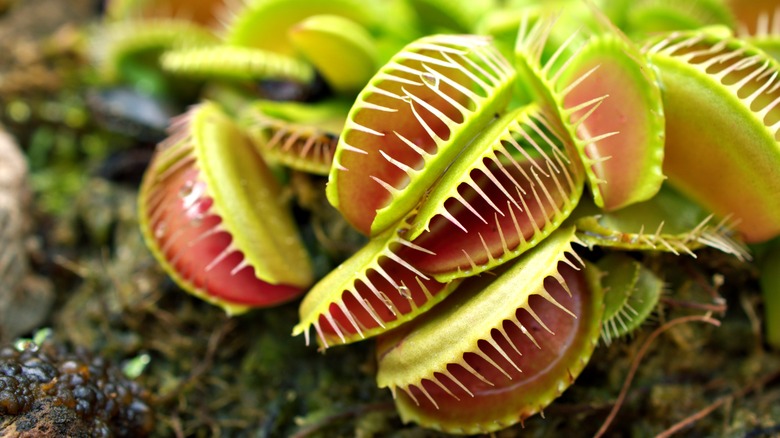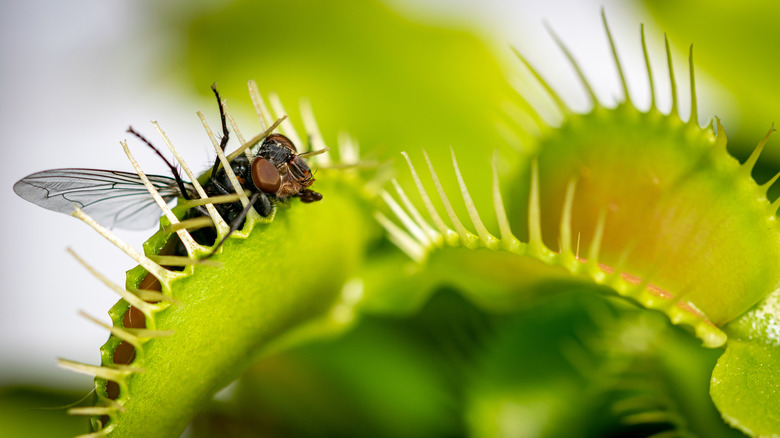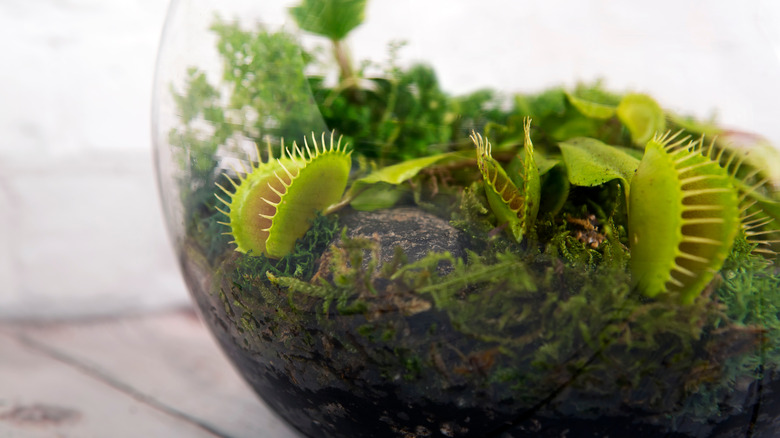Venus Flytraps Are Sensitive: What You Need To Know About Temperature & Humidity
Venus flytraps are unique and fascinating plants, so it's no surprise that so many people try their hand at growing them. Unfortunately, Venus flytraps can be challenging to grow, as many houseplant enthusiasts have learned the hard way. Native to the bogs of the Carolinas, these little plants can quickly die if their needs for high humidity and temperature aren't met.
While Venus flytraps (Dionaea muscipula) can be grown outdoors year-round in USDA zones 7 through 10, they are more commonly grown as houseplants. They have different growing requirements than many other common houseplants though, so it can be difficult for some plant enthusiasts to grow and care for Venus flytraps successfully. Venus flytraps likely evolved their carnivorous nature to cope with the low nitrogen levels in their native habitat so they can be easily injured by overfertilizing. They also require several hours a day of direct sunlight to grow well.
Venus flytraps require warm summer temperatures
While Venus flytraps cannot handle extreme cold, they can grow well at room temperature for most of the year. During the summer months, they prefer temperatures in the mid-70s Fahrenheit. Between November and February, you can allow your flytrap to enter a dormancy period, which some believe may benefit the plant. This requires providing less light and slowly dropping the temperature to the low 40s Fahrenheit. If you don't want your flytrap to go dormant during the winter, simply keep the temperature in the high 60s to mid-70s year round.
Many people bring their houseplants outside for the summer. As long as the temperature is appropriate, Venus flytraps are sure to enjoy this too as it won't just give them sunlight, but also the opportunity to catch some flies or ants. Gardeners in zones 7 through 10 can keep their flytraps outside year-round, and University of Florida Gardening Solutions noted they can grow well in the moist soil of a rain garden.
Humidity is essential for Venus flytraps
Terrariums are popular vessels for Venus flytraps, and there's a good reason for that: for one thing, it's a lot easier to control humidity levels in terrariums. Venus flytraps need relative humidity over 50% to thrive, so consider placing a hygrometer close to the plant to monitor the humidity. If you don't have a terrarium for your flytrap, then placing a dish of water under its pot can also help keep the humidity high enough.
Planting your Venus flytrap in a mix of peat moss and sand, and keeping the growing medium constantly moist should also help keep the humidity high. When adding water, make sure it's rainwater or distilled water, as flytraps are sensitive to the high pH and minerals found in tap water. If you decide to allow your plant to enter a dormancy period during the winter, cut back on watering for those months and water only enough to keep the growing medium from drying out completely.


